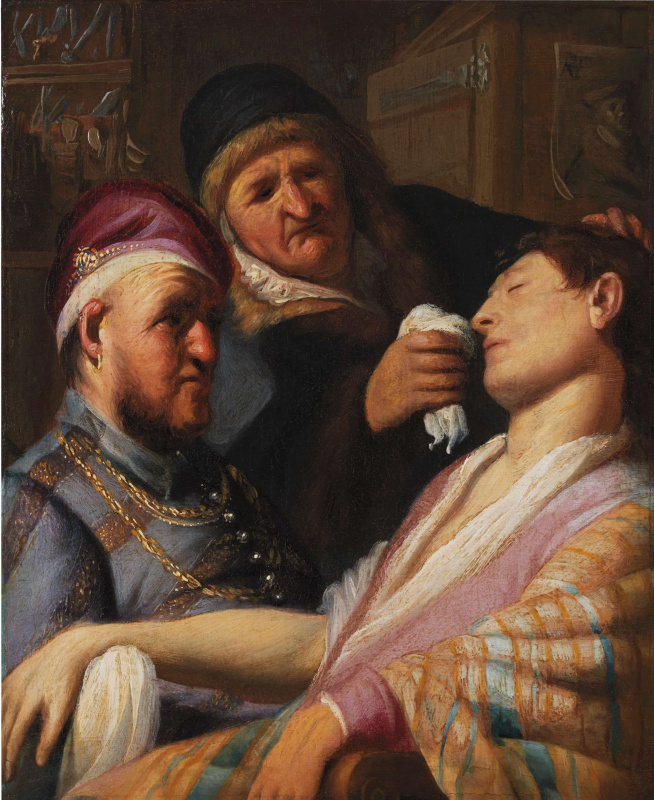log in
Enter site
Login to use Arthive functionality to the maximum
The Dutch Golden Age
3,859 artworks, 106 artists
The Dutch Golden Age (dut. Gouden Eeuw) was a century in the history of this country from the conclusion of the Twelve-year Armistice in 1609 and until the death of Prince William III in 1702 (according to another version, until the conclusion of the Utrecht Peace in 1713 year). In this unique era of the political, economic and cultural greatness of the Netherlands, Dutch artists reached their unprecedented peak, and made a huge impact on the development of art throughout Europe.
After the victory of the Netherlands in the war for independence from the Spanish crown, the tastes and canonical principles of the Catholic Church, the aristocracy and the royal court ceased to influence art. The truly Golden Age of Holland came: Calvinism denied cult painting, which allowed artists to significantly expand the range of subjects for their works; their art acquired a predominantly secular character.
One of the brightest pages of the Dutch Golden Age painting was the birth of still life as a genre, which fully reflected the Dutch love for outlandish colours, rare objects and their symbolic meaning. Kunstkameras appeared in the houses of the rich – collections of rare and unusual gizmos, which gradually from chaotic exotic collections became scientific collections, the exhibits of which often appeared on canvases.
Another outstanding developmental direction of the Dutch Golden Age painting was landscape. Artists captured the charming nature of the Netherlands, the sea and coastal dunes, the banks of canals and rivers, mills and pastures with herds of animals in their paintings. Landscape painting of the Golden Age of Holland was distinguished by realism, atmospheric, naturalistic sky and restrained natural colours. Tavern scenes, home interiors, and festivities were also very popular.
The dominance of Calvinism and the absence of the need to paint iconographic canonical works gave impetus to the development of portrait, in particular, group portrait. Unique instances of this variety of monumental painting adorned various public places - the premises of professional guilds, shooting corporations, charitable institutions.
By the end of the 17th century, the situation in the Netherlands changed; other countries began to influence their culture, politics and economy. The weakening of the economic power of the republic led to the end of the Dutch Golden Age.
Significant paintings of the Dutch Golden Age:
Bathsheba with a Letter from King David, Rembrandt Harmenszoon Van Rijn, 1654
The Anatomy Lesson of Dr. Nicolaes Tulp, Rembrandt Harmenszoon Van Rijn, 1632
The Lute Player, Frans Hals, 1624
The Goldfinch, Carel Fabritius, 1654
View of Delft, Jan Vermeer, 1661
Girl with a Pearl Earring, Jan Vermeer, 1665
Artists of the Dutch Golden Age:
Rembrandt van Rijn, Frans Hals, Jan Vermeer, Pieter Claesz, Willem Heda, Willem Kalf, Jan van Goyen, Paulus Potter, Philips Koninck, Willem van de Velde, Carel Fabritius.
After the victory of the Netherlands in the war for independence from the Spanish crown, the tastes and canonical principles of the Catholic Church, the aristocracy and the royal court ceased to influence art. The truly Golden Age of Holland came: Calvinism denied cult painting, which allowed artists to significantly expand the range of subjects for their works; their art acquired a predominantly secular character.
One of the brightest pages of the Dutch Golden Age painting was the birth of still life as a genre, which fully reflected the Dutch love for outlandish colours, rare objects and their symbolic meaning. Kunstkameras appeared in the houses of the rich – collections of rare and unusual gizmos, which gradually from chaotic exotic collections became scientific collections, the exhibits of which often appeared on canvases.
Another outstanding developmental direction of the Dutch Golden Age painting was landscape. Artists captured the charming nature of the Netherlands, the sea and coastal dunes, the banks of canals and rivers, mills and pastures with herds of animals in their paintings. Landscape painting of the Golden Age of Holland was distinguished by realism, atmospheric, naturalistic sky and restrained natural colours. Tavern scenes, home interiors, and festivities were also very popular.
The dominance of Calvinism and the absence of the need to paint iconographic canonical works gave impetus to the development of portrait, in particular, group portrait. Unique instances of this variety of monumental painting adorned various public places - the premises of professional guilds, shooting corporations, charitable institutions.
By the end of the 17th century, the situation in the Netherlands changed; other countries began to influence their culture, politics and economy. The weakening of the economic power of the republic led to the end of the Dutch Golden Age.
Significant paintings of the Dutch Golden Age:
Bathsheba with a Letter from King David, Rembrandt Harmenszoon Van Rijn, 1654
The Anatomy Lesson of Dr. Nicolaes Tulp, Rembrandt Harmenszoon Van Rijn, 1632
The Lute Player, Frans Hals, 1624
The Goldfinch, Carel Fabritius, 1654
View of Delft, Jan Vermeer, 1661
Girl with a Pearl Earring, Jan Vermeer, 1665
Artists of the Dutch Golden Age:
Rembrandt van Rijn, Frans Hals, Jan Vermeer, Pieter Claesz, Willem Heda, Willem Kalf, Jan van Goyen, Paulus Potter, Philips Koninck, Willem van de Velde, Carel Fabritius.
Read more
Feed

